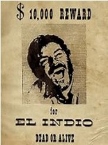IronDuke_slith
Posts: 1595
Joined: 6/30/2002
From: Manchester, UK
Status: offline

|
quote:
ORIGINAL: Erik Rutins
To be clear, I didn't say your concerns were invalid, I said they would be _more_ valid if the focus of the game were on certain operations and exploring land combat within those operations. There are games that cover these areas at a lower ground and time scale and allow you to explore every historical operation that happened before Cobra. That may be your main focus, but it is not the focus of this game, any more than replaying Kursk in detail was the focus of War in the East.
What I wrote above may help clarify this. Joel's responses will probably explain it better. While you have divisions that can be broken down to regiments on the map, just as you did with WITE, as a player you are thinking much more like Roosevelt, Churchill and Eisenhower than like Patton or Montgomery. Your focus will rarely be on a small section of the front, but rather on the whole and on the combination of land and air and amphibious operations rather than just land combat.
Roosevelt, Churchill, Eisenhower, Patton, Montgomery, land, air, amphibious operations.
What if I am playing AXIS?
I have no fleet, so amphibious operations are by definition beyond me, and I have a rapidly diminishing air force unable to gain parity, let along superiority, at any useful point, so land is all I've actually got. That land campaign is 15-20 hexes in total, half that for the first 50 turns, and once it gets any bigger, I'm going to have to run for the Reich, at least in France.
quote:
ORIGINAL: Erik Rutins
Taking the Kursk analogy again, Prokhorovka in War in the East consists of a battle for a single hex. If you are interested in that particular battle, it's not really the best way to get into the details of it, despite the fact that the historical units with their historical and detailed TO&Es and Leaders are there. Despite that, playing out the weeks of 1943 during and after Kursk is a great experience that gives you a great sense of just how much of a blunder Kursk was and how it played into the Soviet position as well as the challenges that faced the Wehrmacht afterwards with the Soviets going over to the strategic offensive. That's what I'm getting at. Now if you add in a much more detailed and realistic air war as part of this and include amphibious operations and a coastline that covers Western Europe, the options get quite interesting and even though the game is not a game just about Normandy, you will get a good sense of how important Normandy (or the other landings) were and when and where you could or should land, what impact each landing has on the overall strategy for the Western Front, etc. It will be a heck of a good game and one that lets you see the big picture while keeping many of the interesting and historical details, just like War in the East.
What is different is that the small roped off bridgehead is all the fighting there should ever be in France. Kursk or no Kursk, I have options in WitE.
Or put another way, in 1942 in Russia, I can go for Moscow, Stalingrad, the Caucasus, Leningrad or something in between.
In WitW 1944, my five options are adjacent hexes, all with 3 Allied Divisions in them.
quote:
With respect, whilst a new air model and naval model will be nice, it was boots on the ground and operational art that liberated France and Italy. A naval model for anything bar a few months in the mediterranearn version of the game, and 2-3 turns in the 1940 game, will be largely pointless given the Kriegsmarine lacked the fuel, tonnage or numbers to trouble the RN, particularly in the period 43-45 covered by this first title.
quote:
ORIGINAL: Erik Rutins
I think air and naval power had quite a lot to do with the Allies' successful landing in Normandy and air power had a large role to play in how the land combat proceeded after the landings.
Yes, but as the German player, once you have sortied your five e-boats (and had them all sunk for the loss of an Allied minesweeper and two fishing boats), and strafed Gold with your two Messerschmitts, you're about finished with your options in this regard.
Your only way to influence the outcome is then to do better on the ground, because that is the only place you have any assets capable of inflicting losses on the enemy. I have always though myself a competent operational wargamer, but I would struggle to outmanouvre anyone at these scales.
quote:
Likewise in the air, this first game is set in a period of Allied Air supremacy. Whatever the Allied player chooses to bomb in the air portion of the game, waves of P-51s and P-47s will attrit the Luftwaffe to nothing by turn 50 of the 1943 campaign, whatever the AXIS player attempts to do (unless he puts everything into national reserve).
quote:
ORIGINAL: Erik Rutins
I think that given the start in 1943, the Axis player will still have options that can cause the Allies trouble, especially given that the outcome is not predetermined and player skill and strategies can vary. Let's assume that your prediction about the Axis being without airpower in 50 turns is correct, which I'm not sure it is if the Axis player plays well. That would still be a year in which the Axis has a lot of decisions to make and could seriously affect the Allied player's options as to where and when to land and how much to risk.
We agree to disagree. Even if the AXIS player has the game of his life overcoming fuel shortages, pilot shortages and enemy superiority in numbers to turn back the bombers over the Reich, the shorter ranges involved and the consequent extra waves of Allied planes that could join in would make any forward defence of the bridgehead area short, ruinous and a bit pointless for what was left of his force.
quote:
Which essentially brings us to the one section of the game where the Allies didn't have it all their own way, being unable to prevent a well organised fighting withdrawl from sicily, having to crawl a bloody crawl up Italy, and having to slug it out in the Bocage for three months before gaining space to manouvre.
Arguably, the only part of the WitW which gives the Germans any options (although these are all still slim) is the ground fighting, and it is precisely this part which is to be played out at a scale that will largely remove meaningful manouvre and decision making.
quote:
ORIGINAL: Erik Rutins
Please see my responses above. I feel that you are not seeing the forest for the trees here and are talking yourself into minimizing the gameplay that will very much be there while focusing on your concerns.
Again, we shall just have to disagree. To my mind, the forest is the land combat, because only here did all protagonists take an active part. The trees are bells and whistles that really only apply to one side because the AXIS simply lacked the resources to compete. Put another way, in a game where Allied air power is supreme, not merely superior, do I need an air model that might allow me to select the squadrons to use, the weapons to load and the waypoints to fly in order to support a Cobra or a Goodwood, or do I just need a button that says "Use strategic bombers in ground support role" before designating a hex?
On the other side of the hill, given they can not influence the air battle over France (even if it is possible for a good AXIS player to do it in the face of an inferior Allied one over Germany - we shall see), and they can not influence the war at sea, what can a German player do when they are facing off across so few hexes? Wherever I attack, I will strike several divisions frontally, supported by several more in reserve. I either sit for 12 turns untill firepower attrits me to nothing or I run.
Only smaller scales can create options in circumstances like these, because I have more opportunity to find and mass against weak points or manouvre (in the dark) against his flanks.
quote:
ORIGINAL: Erik Rutins
In your next post you also express frustration that we are not listening. In fact, you've had several responses now from key people involved in the project. We are listening, even though we do not share the degree of your concern, largely because we know that this can and will work as a great game from past experience.
Responding and not listening are not mutually exclusive activities. The responses have been either we did a great game in the early nineties at this scale and we're confident we can do it again; we're going with 10 miles hexes and that's not going to change; you don't have to buy it if you don't want to, and you don't see the wood from the trees.
Nobody is listening. That's fine, because nobody is obliged to, but I sense mild condescension every time I visit the thread and it is that , rather than the blank denial there is any issue at all, that frustrates.
quote:
ORIGINAL: Erik Rutins
The other point to make here is that creating the map for War in the West (and War in Europe) has been a nine month full-time project on its own so far, with much more work still to be done before it's ready for the release (probably another nine months to finish it). We do not agree that the map scale needs to change, but I want to also give you a sense of how much work it takes to even begin one of these games.
The eventual goal is to have these all fit together as a War in Europe. That's worth keeping in mind as well. A War in Europe at this scale will be an incredible game for any wargamer and we aim to keep it playable.
Only here, in these sorts of responses do I sense a straight answer. Behind closed doors, years ago, scales were decided, and a broad development course plotted. Too much has happened for any change in course to occur, whatever problems are raised. This I understand.
quote:
As Joel also pointed out to your later reply, the idea that we could do the entire West, 1940-1945 in one project is not realistic.
I'm not in a position to judge that, and your word is good enough for me on it. However, given the scale of what occurs in WitE, and the fact someone else managed it, I suppose i go back to the point I made to Joel about seeing what it is about the War in the West that really needs simulating, and going after it. How much of the extra work is a naval model where one side has little or no Navy, or an air model that doesn't directly affect the mode of combat where most people became casualties?
quote:
It would take five or six years to do that and the game would likely never release as Joel and Gary would not be able to support themselves long before the release date. The release plan allows us to explore some logical sections of the war in ways that make the additional features and the amount of work required in each area realistic for our development costs and time. I wish we could do it all and do it four times faster, but we cannot and this market will not support a larger development team.
A clinching argument, I have no issues with this statement, I only get frustrated when people tell me it's actually better to do it this way from all perspectives...
quote:
Finally, I'd (with the very greatest of respect and a gentle tone) point out that the man who gave us the cinematic magnificence that is Star Wars, also gave the world Howard the Duck. Past performance is not a guarantee of future....etc etc etc.
quote:
Using George Lucas on us is a bit of a low blow...
It was gently meant, but the serious point was that I really sense that Gary's name and 2by3s track record is used as a stick to suppress dissent. No one explains to me why my concerns are not really concerns, they just refer me to a track record and it'll be alright on the night. As a result, I illustrated that an artist can be a magician one day, and a bit of a turkey the next. No one is infallible, all arguments should be heard on their merits.
quote:
Well, firstly, the game is surely fundamentally broken if the Germans can beat the western Allies from an historical starting position in either 43 or 44. If this is a turn of phrase (one to note down for the publicity blurb, it was a nice soundbite  ), and what you mean is "lose less bad" a la the victory models for WITP and WitE, then I would continue to argue that it is absolutely essential that the ground combat is modelled meaningfully because only here can the Germans affect the outcome. ), and what you mean is "lose less bad" a la the victory models for WITP and WitE, then I would continue to argue that it is absolutely essential that the ground combat is modelled meaningfully because only here can the Germans affect the outcome.
quote:
ORIGINAL: Erik Rutins
I was really speaking about this from the Allied perspective. The German player will have his hands full from the start trying to figure out a strategic defense without enough resources and playing bluff/counter-bluff with the Allied player until the first landing in Western Europe. As the Axis, you may be able to eliminate a landing if the Allied player gives you the opportunity, but you are fighting a strategic defense and deciding how best to achieve a victory within the game's terms. As with War in the East, this will be a very realistic game, not a fantasy game for either side, but within historical realism it will give you many options.
The argument about a numbers game that the Germans can't win applies equally to War in the East, yet players there enjoy playing in 1943 and 1944 as well. It's a great defensive challenge for the Axis. The Germans did lose this war and they will face the forces that liberated Europe, but how the war unfolds and whether they can achieve a performance better than their historical counterparts is the real question for their side. Again, since you are in the role of supreme commander, the question comes down more to if you didn't have Hitler and Himmler but instead had Kesselring and Model in charge of everything, would it have been different for the Allies?
But what will the German player be actually doing?
Movement of forces is problematic, since any recreation of the transportation plan will make movement in france of large units time consuming and not possible on operational timescales. Therefore, bluff/counter bluff would seem hard to achieve. Unless the Allied player has to set his landing objectives 6 months in advance, all he has to do is use his air superiority to recon AXIS units and then land where they aren't.
If not spending his time trying to shift an infantry divison across a shattered rail network in France, the AXIS player around turn 40 in the 43GC is either patiently soaking up Allied attacks in Italy, occasionally rotating units in and out (he won't be attacking), or wishing he has naval assets to exploit the new naval rules with.
Even the air model may hold scant requirement for his efforts, because if the Allied player is patiently implementing the transportation plan, and this plan is accurately modelled, how does the AXIS player react to myriads of attacks in a northern France in range of most, if not all, the Fighter assets the Allies hold?
In WitE, these numerical and strategic disadvantages are mitigated in 1944 by giving the AXIS player a couple of hundred counters to shuffle, move and fight with, and a hundred hexes of front over which to do it.
However, this thread has successfully established my concerns, and successfully established that nothing is going to change. I am content to wait until release to see who is right.
I genuinely, sincerely and deeply hope that you are. I genuinely, sincerely and deeply fear that I am.
All the very best,
IronDuke
_____________________________
|
 Printable Version
Printable Version














 , my first reaction to this was that given that the individual units will (presumably) be modelled down to individual squads, tanks and artillery pieces, and the screenshot above saw the deployment of some Regimental sized units, how can the game avoid exploring these battles at the operational level?
, my first reaction to this was that given that the individual units will (presumably) be modelled down to individual squads, tanks and artillery pieces, and the screenshot above saw the deployment of some Regimental sized units, how can the game avoid exploring these battles at the operational level? 






 New Messages
New Messages No New Messages
No New Messages Hot Topic w/ New Messages
Hot Topic w/ New Messages Hot Topic w/o New Messages
Hot Topic w/o New Messages Locked w/ New Messages
Locked w/ New Messages Locked w/o New Messages
Locked w/o New Messages Post New Thread
Post New Thread